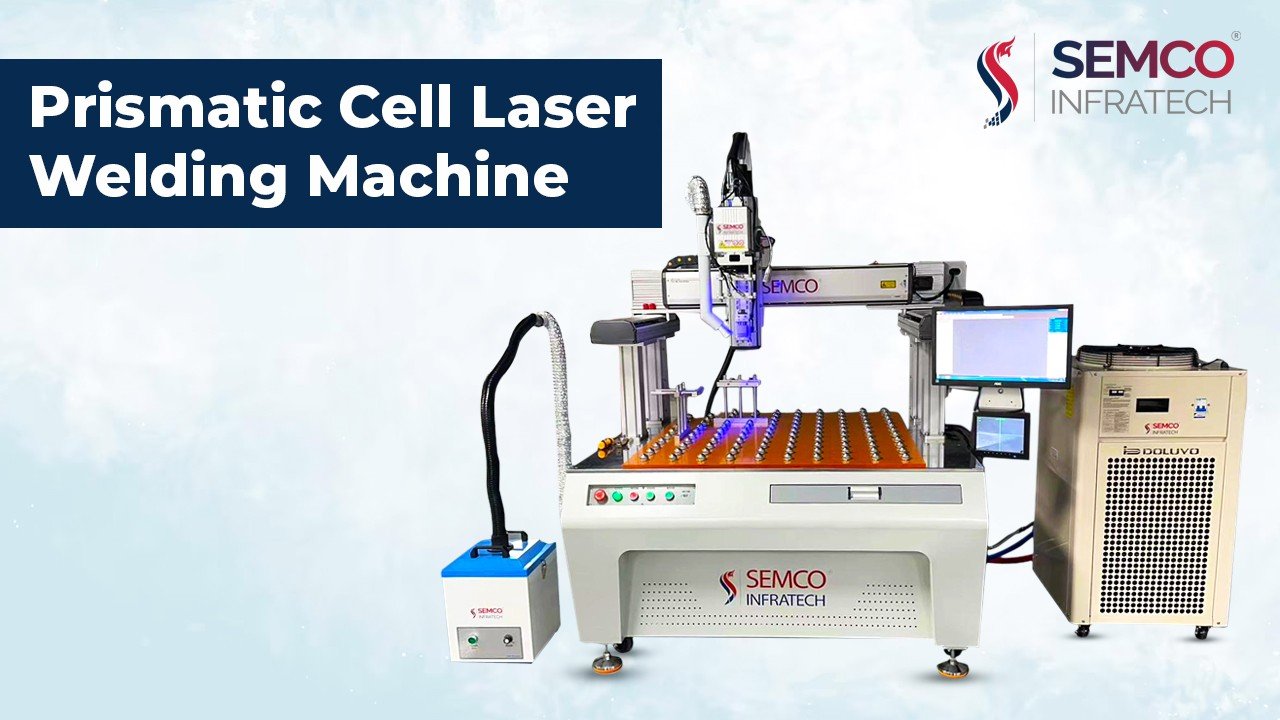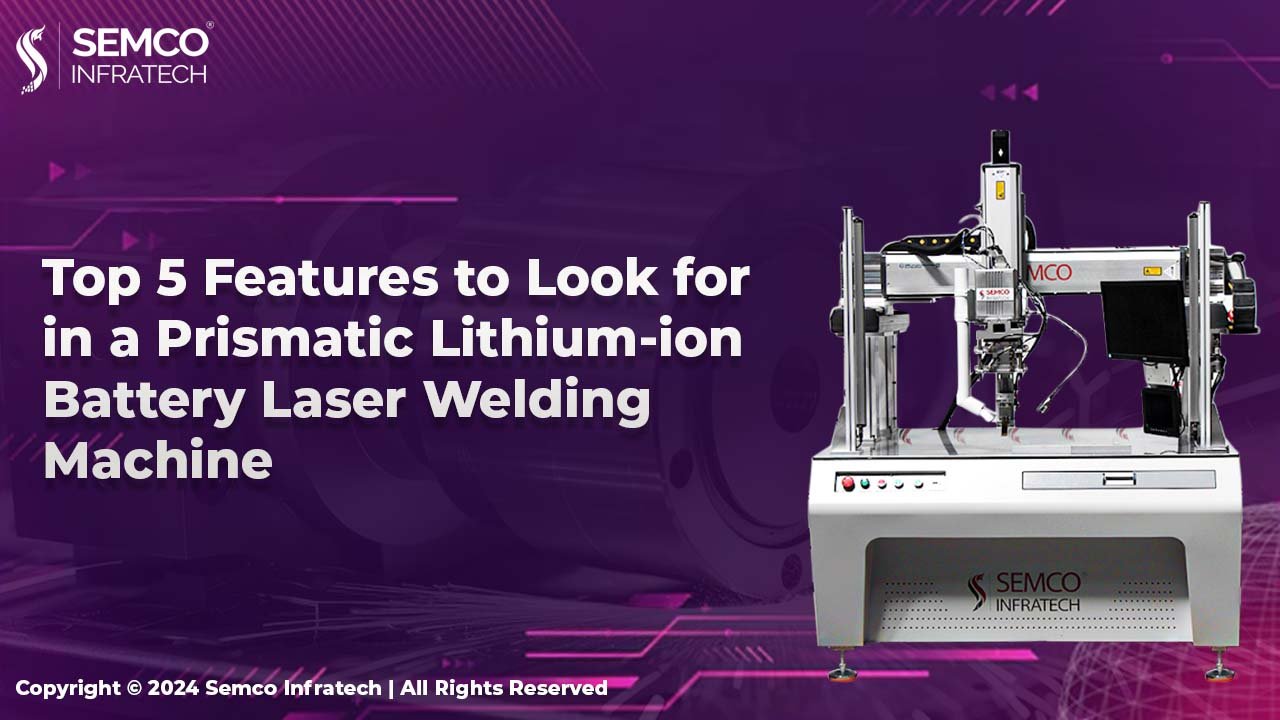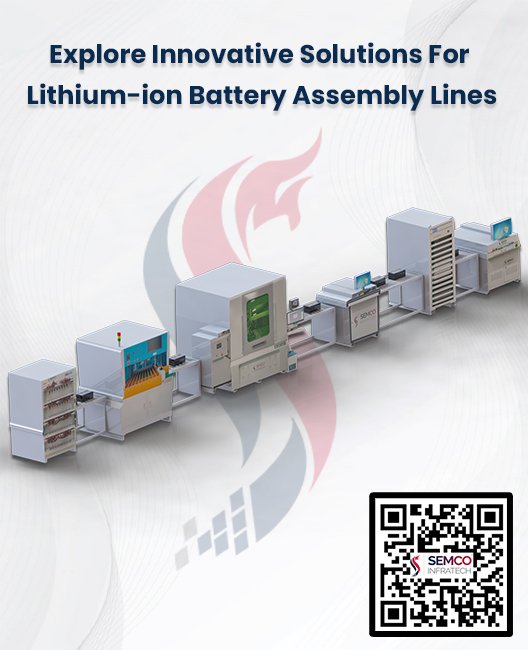There are almost zero chances that you are into lithium-ion batteries and haven’t heard about prismatic battery cells. For those who didn’t, prismatic cells are a type of lithium-ion battery cell with a boxy design. Lithium-ion prismatic cells are used for making battery packs for numerous applications like electric vehicles and energy storage systems.
As we mentioned before, lithium-ion battery packs consist of several prismatic cells joined together. For this joining, laser welding is used. The laser welding process uses a focused beam to melt metals to join cells together. Laser welding is used for precision, and the chances of distortion are very low in this welding.
Working Systems of Laser Welding
Just like any other form of welding, laser welding also uses heat to melt and fuse the pieces. Laser welding works by focusing a high-power laser beam onto the two surfaces to be welded. The laser beam heats the metal to its melting point, and the two surfaces fuse. The laser beam can be moved to different locations to create a continuous weld seam.
Advantages of Laser Welding for Prismatic Battery Cells
Laser welding offers several advantages over other welding methods for prismatic battery cells, including:
- High Weld Quality: Laser welding can produce high-quality welds with minimal distortion. This is important for prismatic battery cells, as any distortion of the cells can lead to performance problems.
- High Speed: Laser welding can be performed at high speeds, which can increase the production rate of prismatic battery cells.
- Low Heat Input: Laser welding produces a low amount of heat input, which can help to prevent damage to the battery cells.
- Versatility: Laser welding can be used to weld a variety of materials, including different types of metals and plastics. This makes it a versatile welding process that can be used to manufacture a wide range of prismatic battery cells.
How Laser Welding Enhances Efficiency?
A prismatic lithium-ion battery laser welding machine significantly enhances efficiency in the production of prismatic lithium-ion battery cells through several key factors:
- Precision and Accuracy: The focused laser beam allows for highly precise welds, ensuring that the battery cells are joined with exact alignment and minimal material wastage. This precision reduces the likelihood of defects, thereby improving the overall quality and reliability of the battery packs.
- Speed and Throughput: Laser welding can be performed at high speeds, which accelerates the manufacturing process. This high-speed capability means that more battery packs can be produced in a shorter amount of time, meeting increasing demand without compromising quality.
- Reduced Thermal Distortion: The low heat input of laser welding minimizes thermal distortion and damage to the battery cells. This ensures the structural integrity and performance of the cells are maintained, leading to longer-lasting and safer battery packs.
- Flexibility in Materials: The ability to weld a variety of materials, including different metals and plastics, makes laser welding a versatile solution. This flexibility allows manufacturers to innovate and utilize different materials without needing to change the welding process, thereby enhancing production efficiency.
Applications of Laser Welding for Prismatic Battery Cells
Laser welding is used in a variety of applications for prismatic battery cells, including:
- Electric Vehicles: Laser welding is used to join the battery cells in electric car battery packs.
- Energy Storage Devices: Laser welding is used to connect battery cells in energy storage devices.
- Additional High-Power Applications: Laser welding is utilized to connect the battery cells in a range of different high-power applications, including power tools and medical devices.
Laser Welding Machine Components
A laser welding machine for prismatic lithium-ion batteries typically consists of the following components:
- Laser beam source: This creates the laser beam used to fuse the battery cells. Fiber lasers are the most commonly used laser beam sources for laser welding prismatic battery cells.
- Beam delivery mechanism: This distributes the laser beam from the laser source to the battery cells. It usually consists of several mirrors and lenses.
- Work Table: This component holds the battery cells in place during welding. It is usually equipped with a positioning mechanism that allows the battery cells to be accurately positioned.
- Control system: This regulates the laser welding process. It typically includes a computer, software, and several sensors and actuators.
Laser Welding Machine Selection
When selecting a prismatic cell laser welding machine, it is important to consider the following factors:
- Laser power rating: Determines the thickness and speed at which materials can be welded.
- Workpiece size: Determines the size of the work table and beam delivery mechanism.
- Production needs: Dictates the welding speed and the level of automation required.
Laser Welding Machine Safety
Laser welding is a safe method as long as necessary precautions are taken. It is essential to use proper personal protection equipment (PPE), such as laser safety goggles, gloves, and a lab coat. Additionally, maintaining a clean and clutter-free laser welding area is crucial.
Laser Welding Machine Maintenance
To ensure the optimal performance and longevity of a laser welding machine, adhere to the manufacturer’s maintenance recommendations. This typically includes regular cleaning of the laser head and beam delivery system, as well as inspection and replacement of worn parts.
Conclusion
A prismatic lithium-ion battery pack laser welding machine is an indispensable tool in the production of prismatic battery cells. Understanding the principles and applications of laser welding enables companies to improve the efficiency and quality of their manufacturing processes. By leveraging the precision, speed, and versatility of laser welding, manufacturers can enhance their production capabilities and contribute to the advancement of lithium-ion battery technology. With the growing demand for these machines, a laser welding machine in India is also seeing significant advancements and adoption, ensuring local manufacturers are well-equipped to meet global standards.






